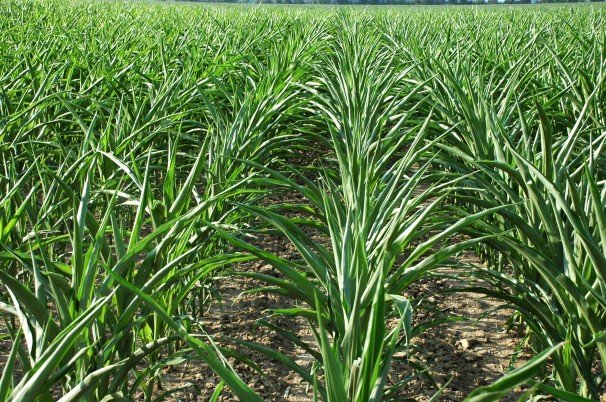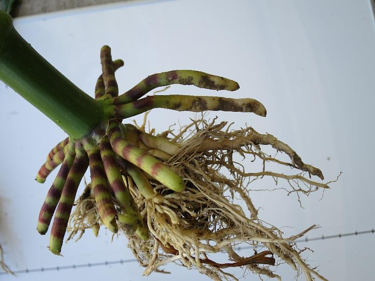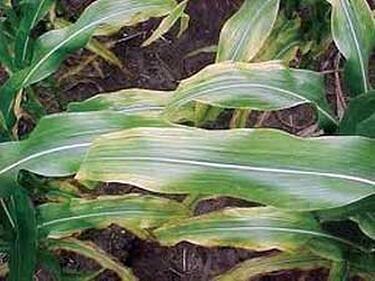
Jul 13, 2020, 10:00 AM
Impacts of Early Season Drought on Corn
 Corn is very susceptible to drought damage because the plant needs water for cell elongation and growth. Because corn cannot delay vegetative growth, there is a danger of yield loss from early drought conditions. Corn plants often roll their leaves to protect themselves from excessive moisture loss due to transpiration. Plants may roll their leaves in response to inadequate moisture, however, rolled leaves in the afternoon may not mean that corn is under drought stress. A key indicator of drought stress is when corn leaves begin to roll early in the morning and continue to stay rolled throughout the day.
Corn is very susceptible to drought damage because the plant needs water for cell elongation and growth. Because corn cannot delay vegetative growth, there is a danger of yield loss from early drought conditions. Corn plants often roll their leaves to protect themselves from excessive moisture loss due to transpiration. Plants may roll their leaves in response to inadequate moisture, however, rolled leaves in the afternoon may not mean that corn is under drought stress. A key indicator of drought stress is when corn leaves begin to roll early in the morning and continue to stay rolled throughout the day.
Factors to Consider:
Stage of Growth
Growth from emergence to V8 (eighth leaf fully emerged with a visible collar) determines the size that the plant will achieve and the size of the individual leaves. Dry weather during this period will reduce plant and leaf size. Minor reductions in leaf size will have little impact on yield while major reductions (all leaves removed from the plant) could reduce potential yields as much as 20 percent.
From V8 to V14, this is the period that determines ear size and the number of kernels set. Drought during this period will reduce ear size and potential yield.
Plant Growth
Leaf rolling conserves water by decreasing the surface area of the leaf exposed to sunlight and reducing transpiration. However, it also reduces photosynthesis, which can decrease plant growth and development. As a result, it can limit yield potential.
Root Growth
Early season dry soils cause root tips to desiccate and stop growing. Dry soils also cause brace roots to grow along the surface rather than penetrate the soil which leads to standability issues later in the season. The decrease in root growth limits the surface area available to collect nutrients and water from the soil. If moisture availability doesn’t improve, overall plant growth can also be compromised.
Nutrient Uptake
 Potassium (K) is vital to several plant functions, including water and nutrient uptake, and stalk health. Dry soils can exacerbate the plant’s inability to uptake K due to reduced physical mobility and root interception of K. Deficiency symptoms start on the plant’s older leaves and can be identified by yellowing or firing on the leaf margins. Generally, drought will have less of an impact where K availability is adequate in the soil. Adequate K levels within the plant will help to increase drought tolerance by supporting water uptake.
Potassium (K) is vital to several plant functions, including water and nutrient uptake, and stalk health. Dry soils can exacerbate the plant’s inability to uptake K due to reduced physical mobility and root interception of K. Deficiency symptoms start on the plant’s older leaves and can be identified by yellowing or firing on the leaf margins. Generally, drought will have less of an impact where K availability is adequate in the soil. Adequate K levels within the plant will help to increase drought tolerance by supporting water uptake.
Action Plan:
- Consider Conservation Tillage: Tillage incorporates residue into the soil, reducing the benefits of surface residues for soil moisture conservation. Tillage also aerates the soil, which increases the decomposition of organic matter. Conservation tillage makes more water available to corn by reducing evaporation. In addition, continuous no-till (i.e., the absence of tillage for several consecutive growing seasons) can increase soil's water-holding capacity and infiltration.
- Consider K in your fertility program: K is a vital nutrient for optimal plant growth, second to nitrogen in terms of quantity a corn plant needs, and performing a number of functions that ensure healthy, stress-resistant plants. By helping to create concentration gradients inside the plant, K supports water uptake into the plant, which is essential when water resources are not readily available. K also regulates the plant’s leaf tissue openings to keep moisture in the plant rather than distributing it through the leaves, which contributes to better stalk strength and standability.
- Evaluate your fields weekly if drought is present in your area: Drought stress during vegetative stages results in reduced stem and leaf cell expansion (shorter plants with less leaf area). When drought stress is combined with heat stress, vegetative development will progress more rapidly requiring more moisture & nutrient uptake.
Summary:
Early season drought can limit yield potential because of its impact on the plant’s development processes. Extended periods of drought can result in kernel loss and yield reduction as the number of kernel rows on the ear are determined around the V7 growth stage up until one week before silk emergence.
Corn leaves that are rolled up for a couple of days likely won’t see significant yield loss, but corn that’s rolled up for the majority of a two-week period may see yield losses up to 20 percent. Yield reduction varies greatly depending on the severity and duration of the stress.
Resources:
- Influence of Drought on Corn and Soybeans
- Potassium and Drought: Mosaic Crop Nutrition
- Impact of Early Drought on Corn Yield
- Photo credits:
- Drought Stressed Corn Picture: Ohio Country Journal
- Root Growth Picture: Know More Grow More - Syngenta
- Potassium Deficiency Corn Picture: Michigan State University

